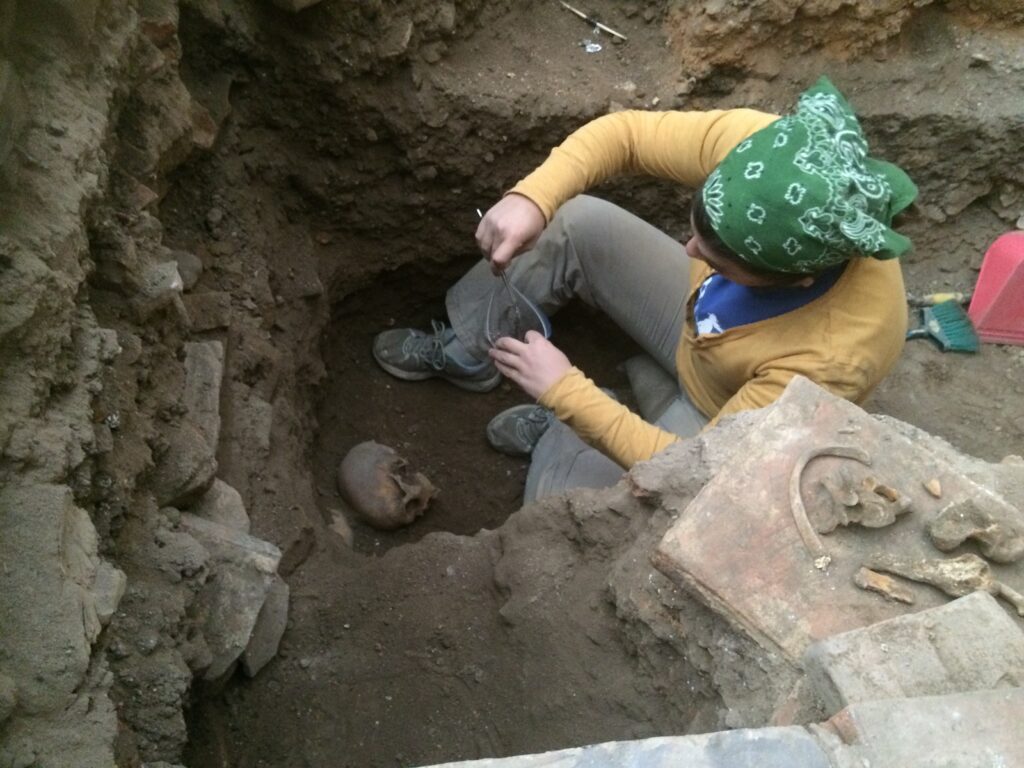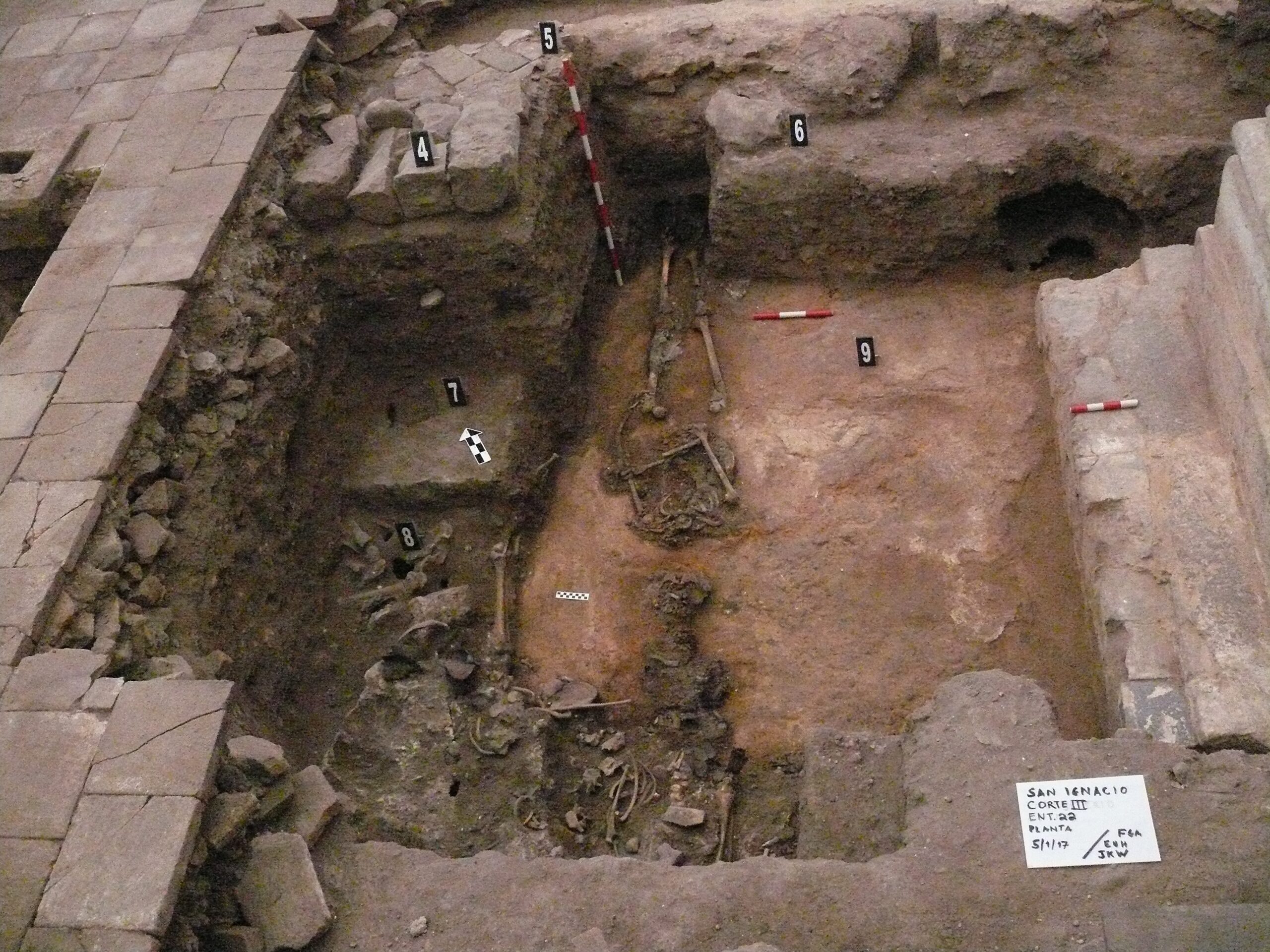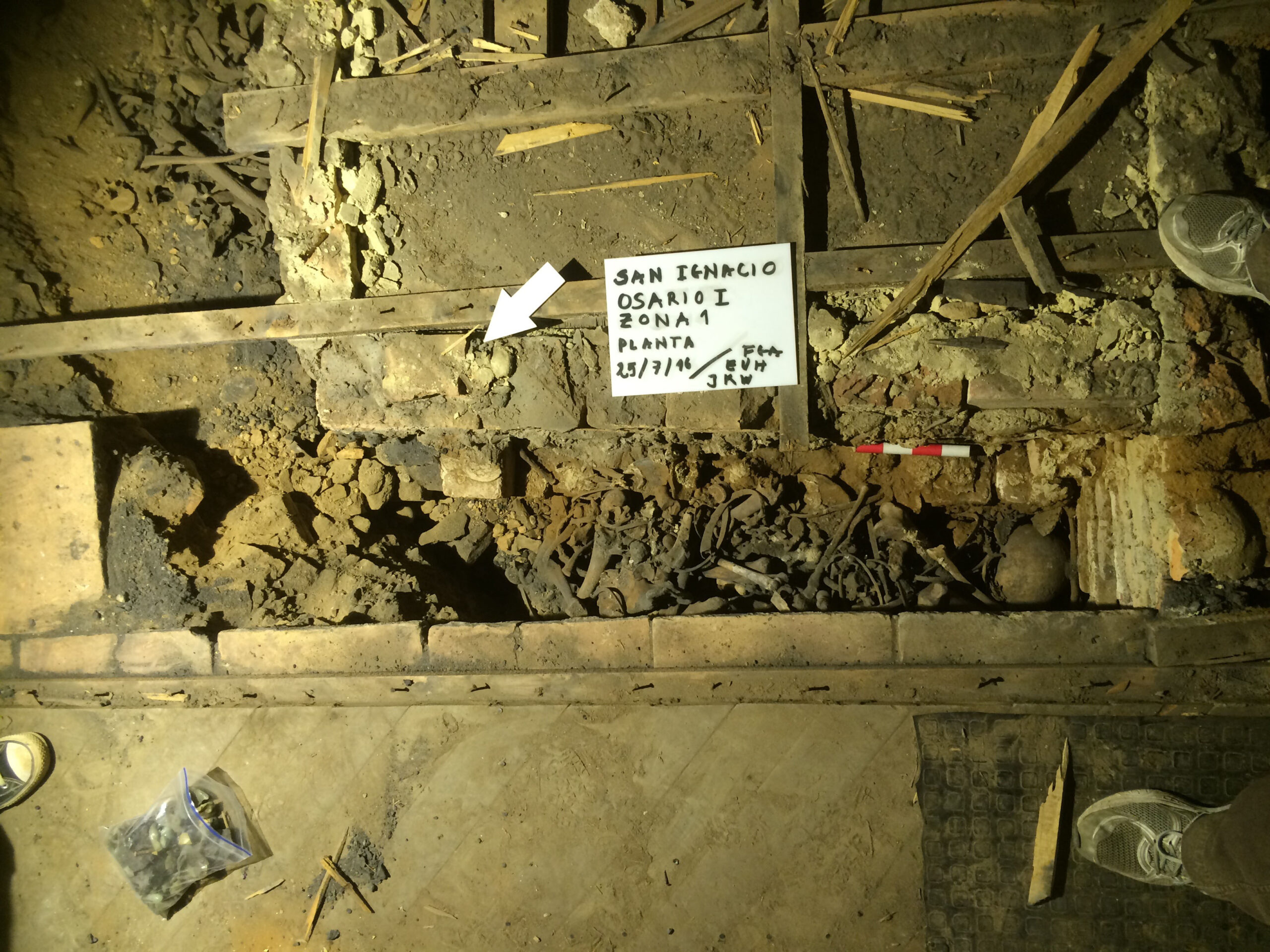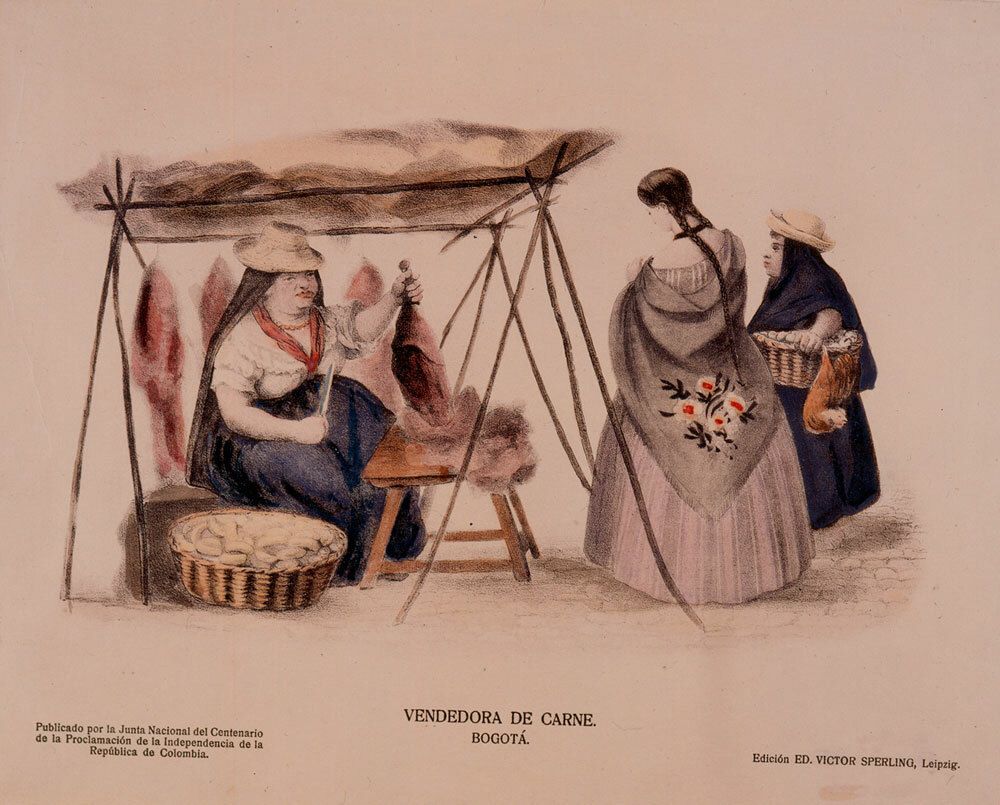Bioarchaeological Research
Investigaciones bioarqueológicas
Generally speaking, Colombian law considers all archaeological objects –including human remains- recovered from either historical or pre-Hispanic sites as part of National Cultural Heritage. Beyond this overarching designation, however, there are still no legal norms or specific codes of ethics in place aiming at protecting ancient burial sites and governing the practice of funerary archaeology in Colombia. Still, the San Ignacio Archaeological Project seeks to align itself with reflexive approaches widely accepted within the framework of contemporary social archaeology, which promote an ethical and engaged treatment of human remains excavated at the site, in compliance with the codes of ethics of the World Archaeological Congress. For this reason, the images of funerary contexts and human skeletal elements presented on this page are few and are made public for strictly educational purposes. We ask those who view them to do so with the respect that all human remains are due, regardless of the origin, ethnicity, religion, nationality, customs or traditions of the people to whom they once belonged.
Bioarchaeological analyses conducted as part of the San Ignacio archaeological project have provided groundbreaking evidence on the demographics, health, and cultural practices prevailing in both Colonial Santafé and early Republican Bogotá. Led by Dr. Wesp, our team conducted extensive macroscopic analyses on the skeletal collection excavated from the church. This involved an inventory of the entire collection, resulting in the identification of at least 81 individuals buried in 35 single or collective graves. Additionally, we recovered at least 50 individuals of various ages from a context of commingled remains. Through the examination of skeletal markers such as age-at-death, sex estimation, stature estimation, and body mass estimation, we were able to gain valuable demographic insights into the population buried at San Ignacio. These analyses not only provided a broader understanding of the individuals themselves but also set an important precedent for further investigations into their health and dietary practices.

La Dra. Julie K. Wesp recupera restos óseos humanos del presbiterio de San Ignacio
Bioarchaeological research at San Ignacio has not only contributed to our understanding of social life in the past but also highlighted the importance of interdisciplinary approaches in studying complex archaeological contexts. Through the integration of demographic, health-related, and genetic data, these analyses have significantly enriched our knowledge of the diverse population congregating in San Ignacio, suggesting new and exciting avenues of research into the past of Santafé, Bogotá, and the Hispanic world.
Title Image: Drawing of an individual buried in the presbytery with textile remains over their left thigh.
____________________________________________________________
En términos generales, la legislación cultural vigente en Colombia considera los restos humanos provenientes de sitios arqueológicos tanto prehispánicos como históricos, como parte integral del Patrimonio Cultural de la Nación. Sin embargo, más allá de esta designación, aún no existen normativas ni códigos de ética específicos que, de entrada, definan el manejo que deben recibir los antiguos sitios de enterramiento dentro de la práctica de la arqueología funeraria en Colombia. Pese a esto, el Proyecto Arqueológico San Ignacio busca alinearse con tendencias reflexivas y autocríticas ampliamente aceptadas dentro del marco de la arqueología social contemporánea a nivel global, promoviendo un tratamiento ético y socialmente comprometido de los restos humanos excavados en el sitio, tal como lo dictan los códigos de ética del World Archaeological Congress. En esta medida, las imágenes de contextos funerarios y elementos óseos humanos que presentamos aquí son pocas y de carácter estrictamente educativo; solicitamos a quienes las observen que lo hagan con el respeto y reverencia que se merecen todos los restos humanos, independientemente del origen, etnicidad, religión, nacionalidad, costumbres o tradiciones de las personas a quien alguna vez pertenecieron.

Diego Ruiz y Sthefany Vélez analizando restos óseos humanos en el laboratorio.
Los análisis bioarqueológicos llevados a cabo dentro del marco del proyecto arqueológico de San Ignacio han arrojado datos de gran relevancia con respecto a la demografía, la salud y las prácticas culturales prevalecientes entre la población de la Santafé colonial y la Bogotá republicana. Bajo el liderazgo de la Dra. Wesp, nuestro equipo realizó el análisis macroscópico de la colección ósea excavada en la iglesia, lográndose la identificación de por lo menos 81 individuos provenientes de 35 enterramientos individuales o colectivos. Adicionalmente, recuperamos por lo menos 50 individuos de varias edades en un contexto de huesos mezclados. Con base en marcadores esqueléticos como edad, sexo, estatura y estimación de masa corporal, pudimos obtener datos demográficos valiosos sobre la población inhumada en San Ignacio. Estos análisis no sólo brindan datos generales sobre las características físicas de estos individuos, sino que también sientan bases fundamentales para futuras investigaciones enfocadas en su salud y sus prácticas alimentarias.
La investigación bioarqueológica en San Ignacio no sólo ha contribuido a nuestra comprensión de la vida social en el pasado, sino que también ha puesto de relieve la importancia de los enfoques interdisciplinarios en el estudio de contextos arqueológicos complejos. Mediante la integración de datos demográficos y genéticos, estos análisis han enriquecido significativamente nuestro conocimiento de la comunidad jesuítica en la América colonial, sugiriendo nuevos problemas de investigación sobre el pasado de Santafé, Bogotá y el mundo hispano.
Imagen de título: Dibujo de un individuo enterrado en el presbiterio con restos de textiles sobre su muslo izquierdo.



